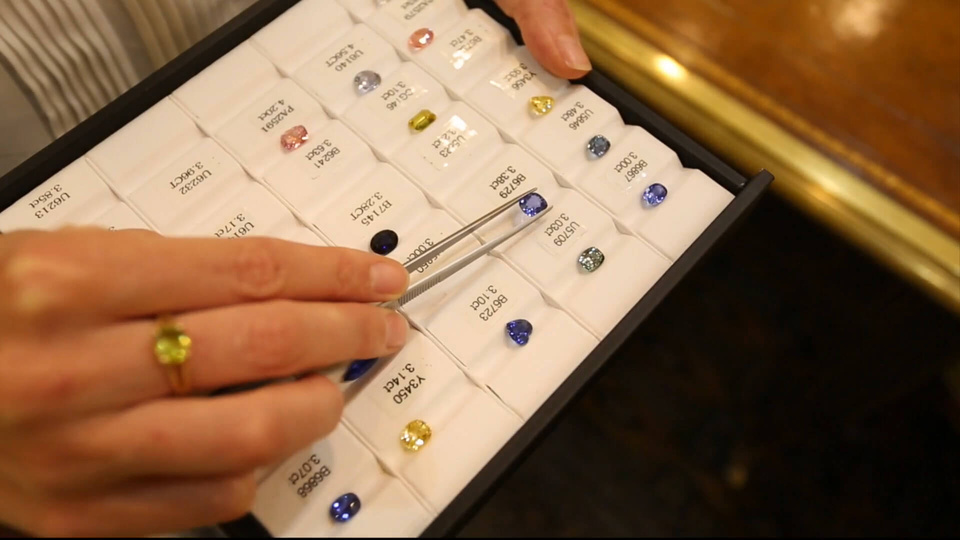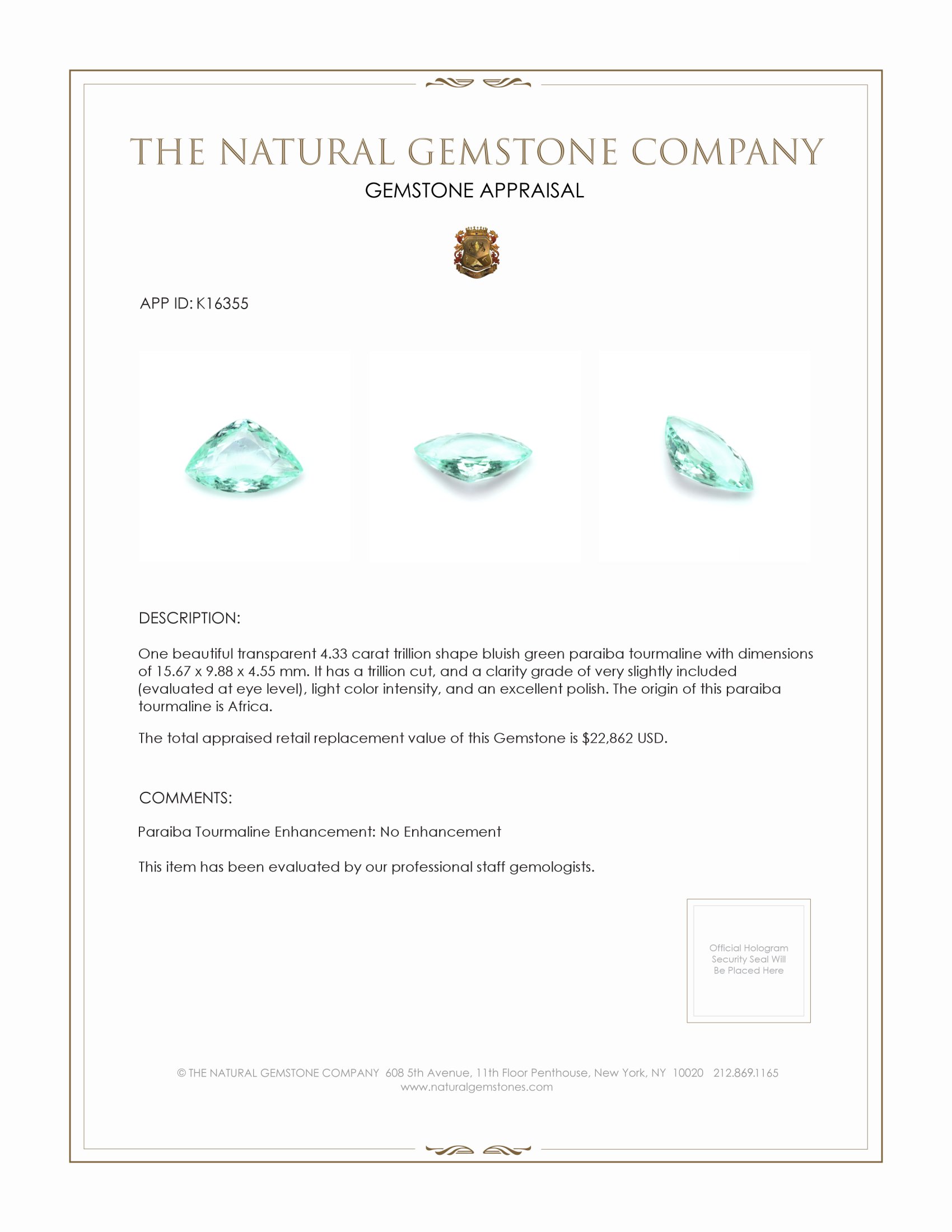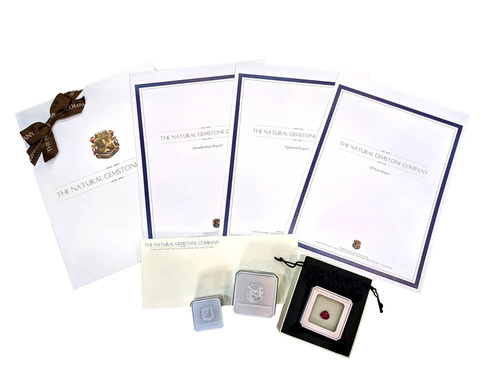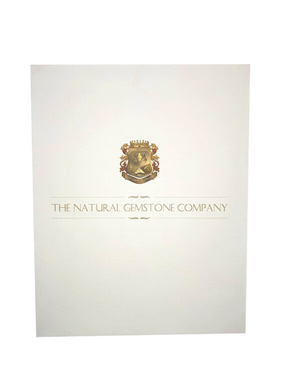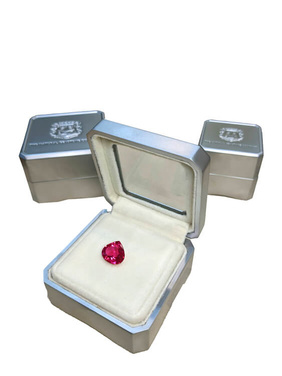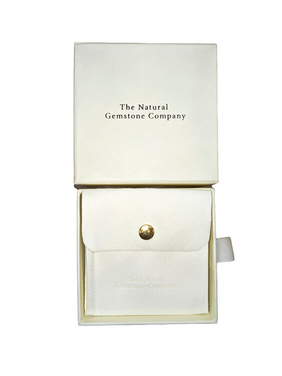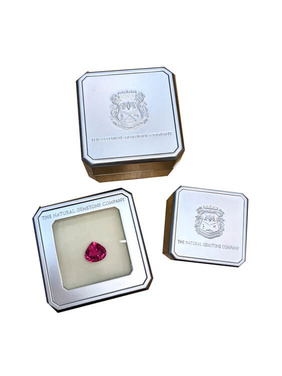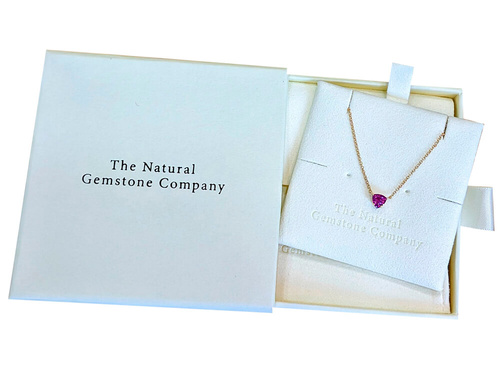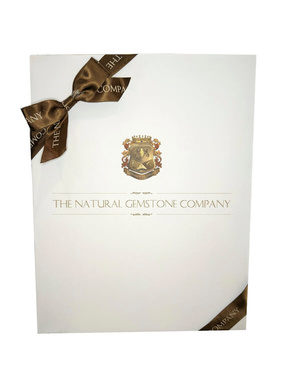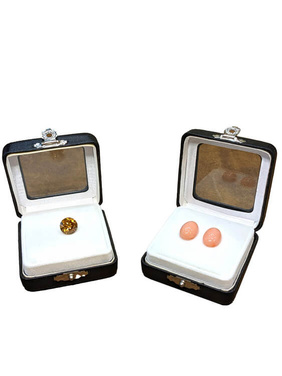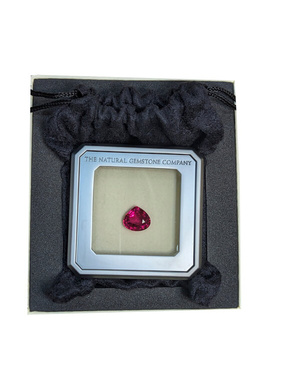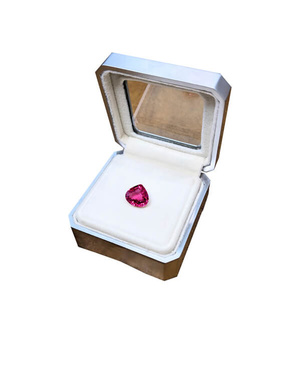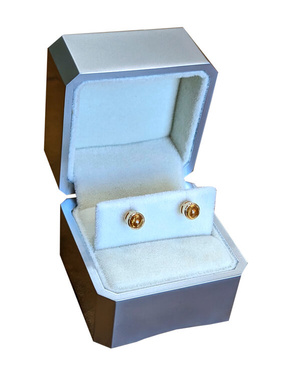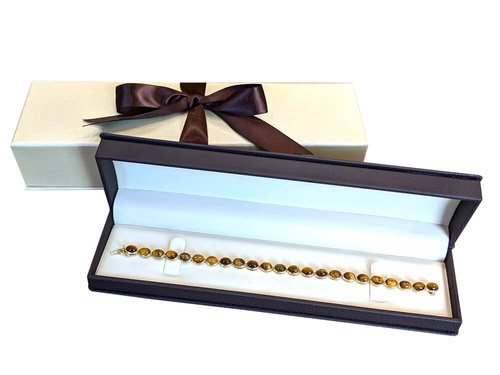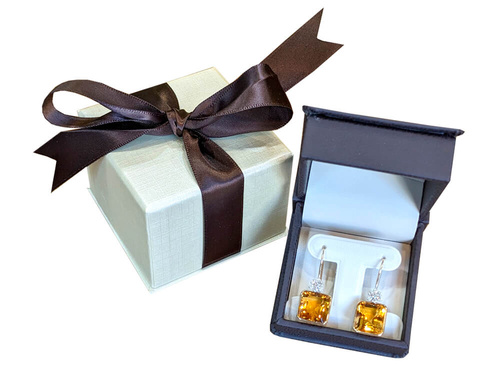- Stone14
- Reports3





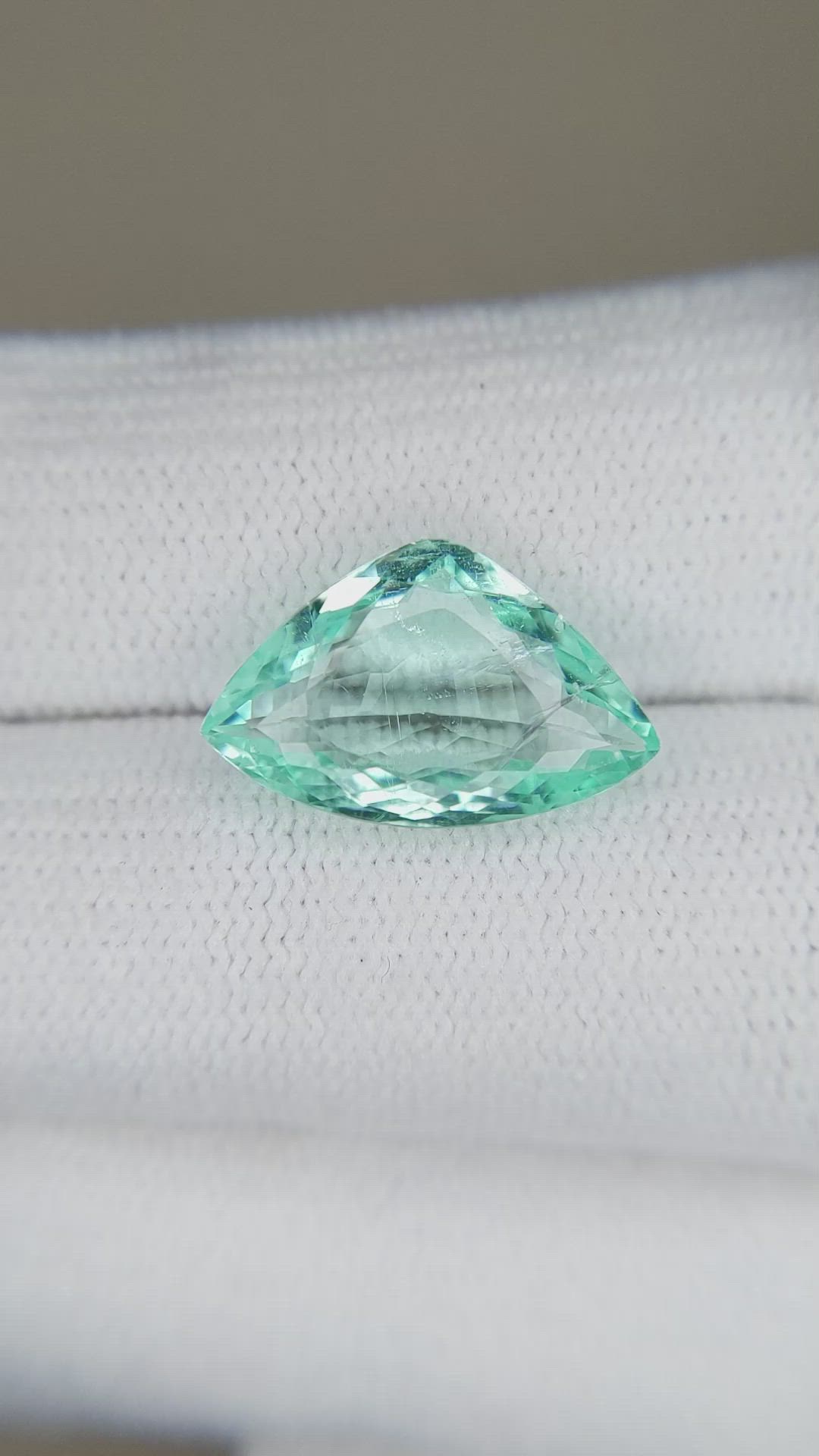
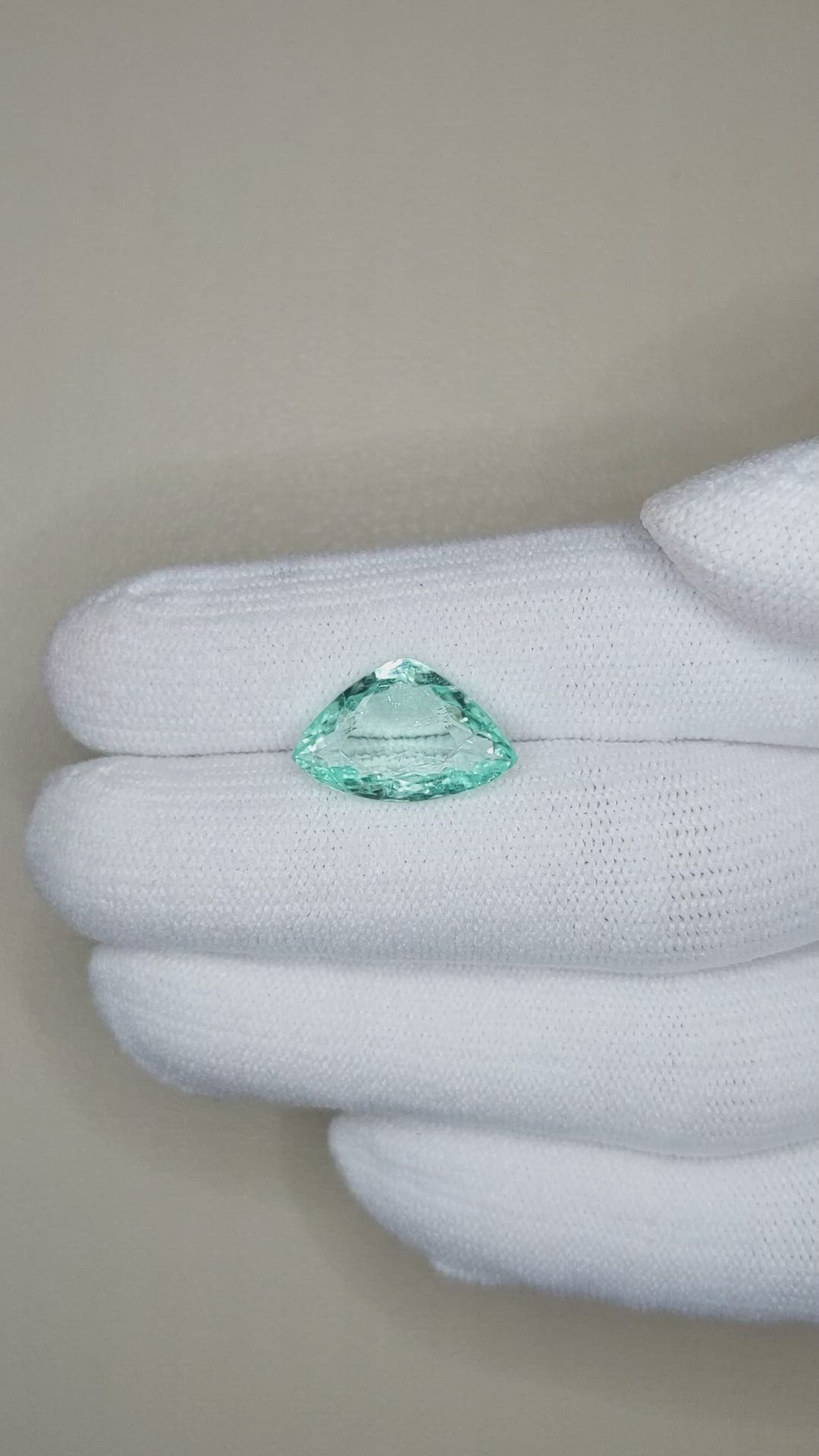
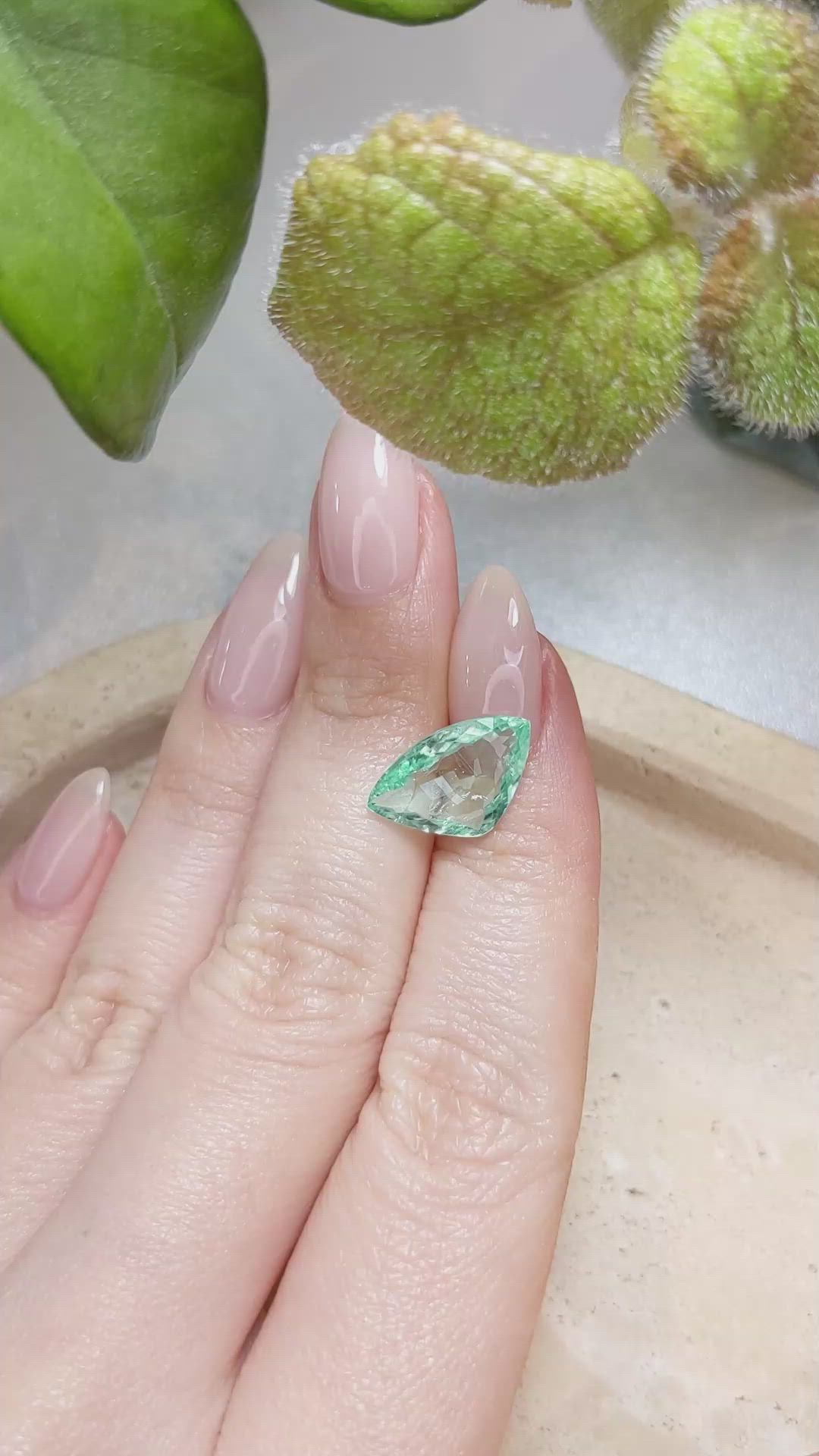
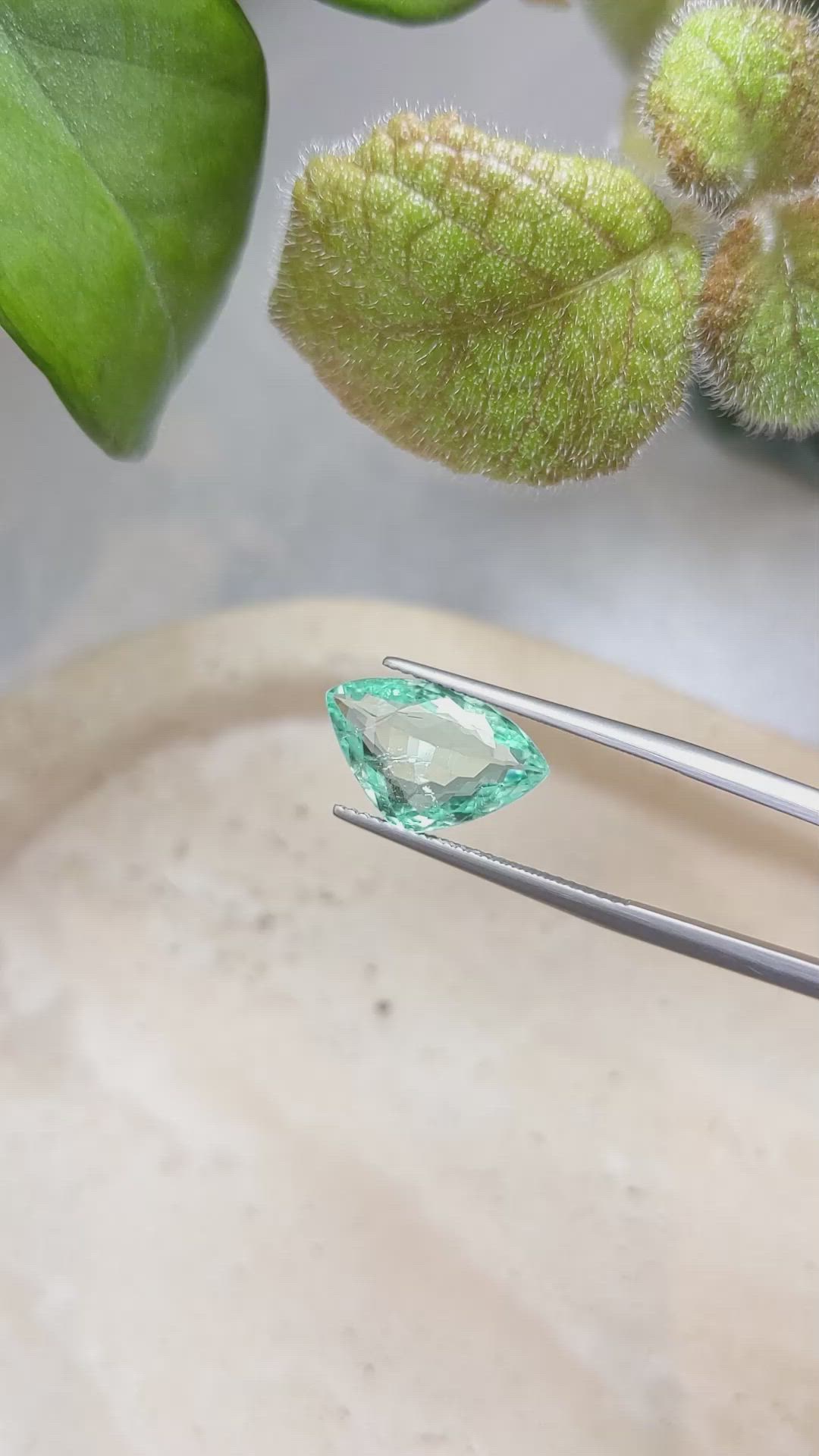
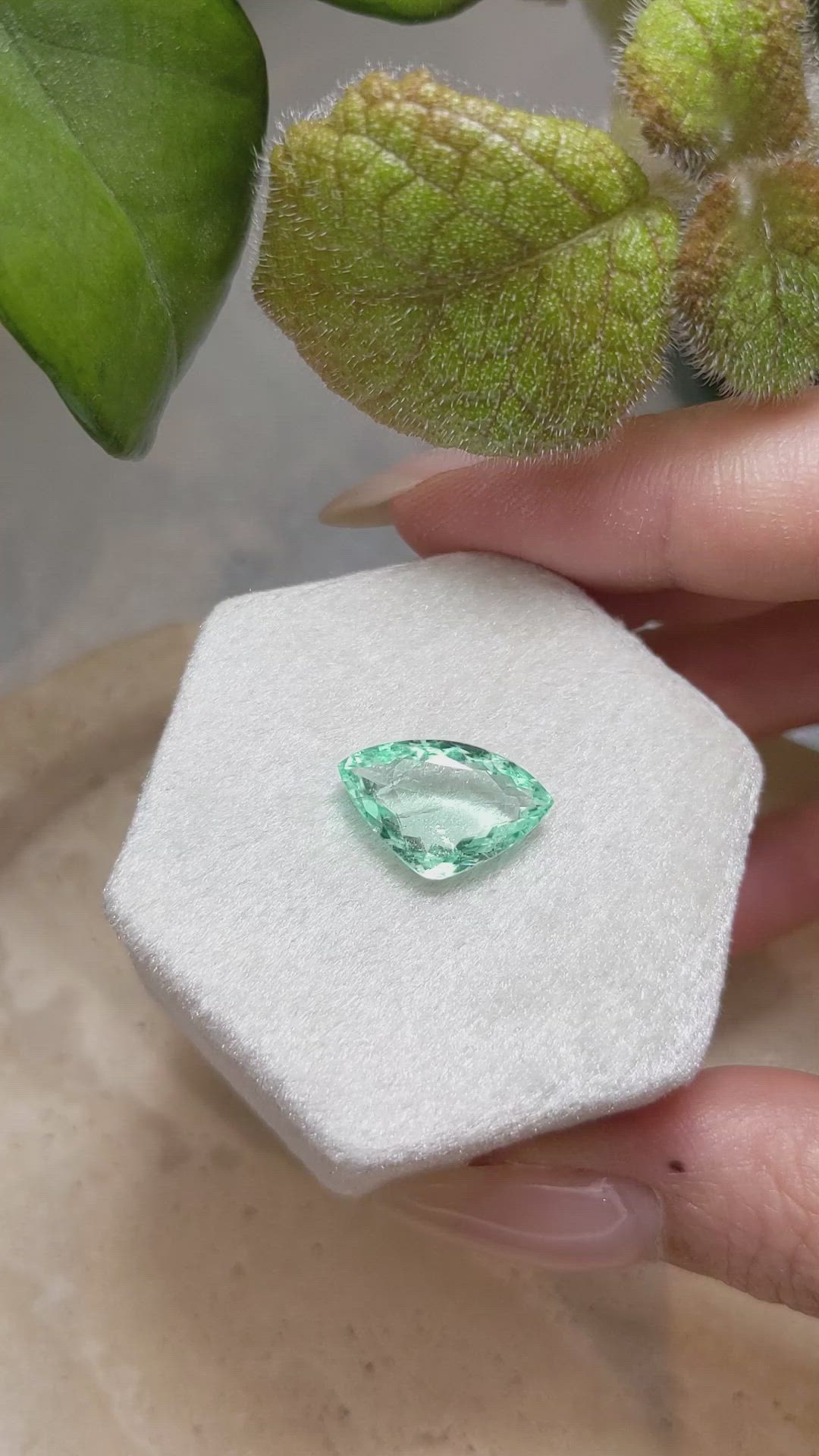




4.33 Ct. Paraiba Tourmaline from Africa
This loose stone ships by Dec 24
Item ID: | K16355 |
|---|---|
Dimensions (MM): help | Length: 15.67 Width: 9.88 Height: 4.55 |
Weight: | 4.33 Ct. |
Color: help | Bluish Green |
Color intensity: help | Light |
Clarity: help | Very Slightly Included |
Shape: help | Trillion |
Cut: | Trillion Cut |
Cutting style: | Faceted |
Enhancements: help | No Enhancement |
Origin: help | Africa |
Per carat price: help | $5,280 |
This 4.33 carat paraiba tourmaline from Africa presents a textbook study in controlled faceting and material purity, ideal for collectors and investors who value technical precision. The stone measures 15.67 by 9.88 by 4.55 mm, and its trillion shape offers a triangular outline that is both modern and efficient for light performance. The cutter has employed a well considered crown pavilion relationship to preserve the gem weight while enhancing color saturation and return, resulting in balanced dispersion from its faceted planes. The light bluish green hue reads as cool and slightly minty under daylight, and the light color intensity allows for a delicate but distinctly paraiba character from copper bearing tourmaline material. Clarity is graded as very slightly included, evaluated at eye level, and the inclusions are minor and mostly confined beneath facet junctions so as not to compromise face up transparency. The polish is excellent, giving crisp facet junctions and minimal surface disturbance, which maximizes luster and contributes to optimal optical performance in a trillion profile.
From a craftsmanship perspective, the trillion cut on this specimen has been executed to prioritize both visual spread and optical return, an important consideration with paraiba tourmaline where color and transparency drive value. The triangular geometry demands exacting symmetry to avoid light leakage at the corners, and this example demonstrates consistent pavilion depth and a well controlled girdle profile that supports secure setting options. Facet arrays on the crown have been arranged to open the stone visually, permitting even color distribution across the table while preserving the captivating neon like undertone typical of copper bearing tourmalines. Because there has been no enhancement, the natural origin of the color and the internal characteristics are intact, adding technical credibility for connoisseurs. The untreated condition combined with excellent polish and thoughtful proportions creates a gem that is both technically refined and visually compelling, ready to be mounted in bespoke jewelry or retained in a collection.
When assessing investment potential, provenance and treatment status are critical variables, and this specimen scores highly in both respects. African paraiba tourmalines remain comparatively rare relative to historical Brazilian material, and the market places a premium on untreated stones with clear color and good weight. At 4.33 carat this gem occupies a size threshold where price per carat typically increases due to scarcity of larger, eye clean stones exhibiting paraiba like coloration. The light intensity of the bluish green tone moderates but does not negate demand, because buyers and auction houses increasingly seek natural, untreated examples with documented origin and superior cutting. Market dynamics over the past decade demonstrate that supply constraints from primary sources, combined with growing collector interest in colored gemstones as an alternative asset class, create a structural environment favorable to appreciation for high quality paraiba specimens. The absence of enhancement further strengthens provenance based valuation, because laboratory treated or irradiated material tends to be discounted by both dealers and institutional buyers.
For a practical investment strategy, The Natural Gemstone Company recommends documenting this paraiba with independent gemological reporting to capture its African origin, carat weight, clarity characterization, and untreated status in perpetuity. Proper certification increases liquidity, because it enables easier entry into secondary markets and auction venues where provenance and treatment disclosures are mandatory. Storage, insurance, and periodic reappraisal are also sensible measures, as liquidity can be seasonal and market sentiment can amplify price movement for rare categories like paraiba tourmaline. From a technical perspective, the combination of a commercially significant carat weight, exemplary polish, precise trillion proportions, and natural bluish green copper influenced color make this gem a compelling candidate for medium to long term appreciation. Collectors who prioritize untreated material and meticulous craftsmanship will find this piece meets the exacting standards required for both aesthetic enjoyment and strategic allocation in a diversified gemstone portfolio.

